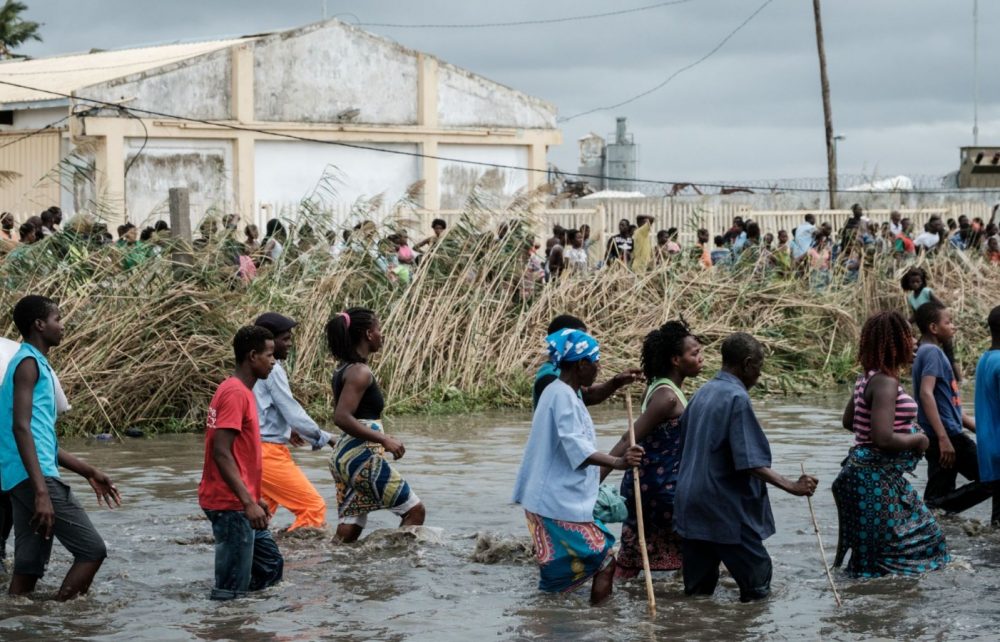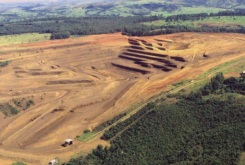Six months on, Mozambique is still recovering from the double blow of cyclones Idai & Kenneth. The country has experienced several huge cyclones since the turn of the millennium, as such events appear to be becoming more common as a result of climate change. Yet out of the death and destruction, valuable lessons on climate resilience appear to have been learnt and businesses would do well to replicate the strategies adopted in building new schools, health centres and homes.
Cyclones regularly form in the Mozambique Channel, fed by warm water temperatures. Cyclone Idai made landfall near Beira on 14 March, just weeks after serious flooding, while Cyclone Kenneth struck 1,000 kilometres further north, near Pemba, on 25 April. They were two of the five worst ever storms to be recorded in Mozambique, with wind speeds reaching 210 kilometres an hour (km/hour) and gusts of up to 280 km/hour.
A total of 2.2 million people, mainly in Mozambique but also in Malawi and Zimbabwe, were affected. Hundreds of people were killed and according to the UN Office for Disaster Risk Reduction, 300,000 homes were damaged or destroyed, leaving 1.8 million people homeless, 100 health facilities rendered unusable and 4,000 classrooms flattened.
About 715,000 hectares of crops were destroyed. The lack of clean drinking water resulted in a cholera outbreak, while rates of malaria infection and diarrhoea also increased. U.N. secretary-general António Guterres described it as “one of the worst environmental disasters ever experienced in Africa”.
The area in and around the city of Beira was worst hit. The city has a population of about half a million, many in informal settlements that are not able to withstand extreme weather events. The International Federation of Red Cross and Red Crescent Societies said that 90% of the city was destroyed by Cyclone Idai.
It was completely cut off when a dam burst, adding to the rainwater brought by the cyclone, while storm surges offshore reached an incredible 4 metres. It is well known that natural disasters affect the poorest in society disproportionately and on this occasion, the flood-affected areas included areas with higher than average levels of poverty.
Donor support
The government’s own disaster response budget totalled just US$18 million and was designed to support search and rescue operations for the first three days after any event, so it was clear that donor support was needed. A total of US$1.2 billion was pledged by donors at a conference in Beira at the end of May. Much of the money is being used to re-establish agricultural production in the area to the south of Beira, to improve food security, help those affected and re-establish the rural economy.
More funding has been promised since then but it is clear that it has not been enough. On 24 October, the UN Economic Commission for Africa (ECA) said that US$3.2 billion was needed to help Mozambique recover. In addition, the executive director of the government’s reconstruction authority, Franciso Pereira, said in October that the rehabilitation of roads and other public infrastructure requires US$700 million investment, while housing needs US$600 million.
Most recently, in September, the International Development Association of the World Bank approved US$130 million in grants to the Cyclones Idai & Kenneth Emergency Recovery and Resilience Project. Michel Matera, World Bank senior urban specialist, commented: “A large portion of the funding will be utilized in the repair and reconstruction of housing for selected vulnerable communities, as well as to rebuild public infrastructure. We will also support the recovery of economic activities through the private sector in affected provinces.”
The money is expected to attract partner funding from bilateral donors. It will be used to help rebuild infrastructure and finance climate resilience projects in the worst affected areas. One project involves building 15,000 homes for the 75,000 people in Sofala and Cabo Delgado provinces who lost their houses in the cyclones. Mark Lundell, the World Bank country director for Mozambique, Madagascar, Mauritius, Seychelles and Comoros, said that the World Bank had now provided more than US$500 million to help the recovery effort, although some of this involved the reallocation of existing financing.
Short and long term support
Broadly speaking, government and donor funding has been targeted at two areas: short-term recovery and long-term mitigation. In the short-term, some of those who lost their sources of income were given work clearing debris and drainage canals after the cyclones, as well as rehabilitating schools and clinics. Donor funding is also being used to give poor families a basic income while they re-establish themselves economically. Low and no-interest lending is being offered to informal and small businesses to help them rebuild their operations.
In the longer term, funding from the World Bank and other donors is being used to make the city of Beira more cyclone-resistant, including by improving drainage systems and coastal protection. Some of the funding is also being spent on building multi-functional elevated flood evacuation sites and cyclone wind shelters. Speaking about the Mozambican cyclones, Mami Mizutori, the UN secretary-general’s special representative for disaster risk reduction, said: “While we must do everything humanly possible to reduce greenhouse gas emissions over the next 12 years, the world also must learn how to build to last in an age of weather extremes.”
The cyclones tested previous attempts at climate resilience and demonstrated that more recent reconstruction is better. When the town of Buzi in Manica Province was badly hit by a cyclone in 2000, all houses, schools and clinics in an area now named Community 2000 were rebuilt. However, the new buildings were unable to withstand the flooding brought by Cyclone Idai and buildings were once again flattened.
However, while most classrooms in the affected parts of Manica and Sofala provinces were destroyed in the recent cyclones, 93 classrooms built to new UN-Habitat standards remained intact. The schools were built with UN-Habitat advice after the agency was contracted by Mozambique’s Ministry of Education and Human Development to provide technical assistance. The World Bank provided US$15 million to help rebuild and modernise existing schools under the Safer Schools Programme, while new national building regulations were also drawn up. The same standards can be adopted by businesses.
Moreover, parts of Beira were saved by improvements to the drainage system that were completed just six months before Cyclone Idai. The new works ensured that more rainwater was funnelled to the sea than would otherwise have been the case. The disasters also proved the benefits of making sure every rural district has at least one storm-resistant building to be used in cases of emergency.
Delayed reconstruction
Donors and the governments of the affected countries have pledged to ‘Build Back Better’, by not just rebuilding what was destroyed but ensuring that the replacement buildings and infrastructure are much more capable of withstanding future cyclones. Climate resistant structures are often more expensive to build but their value was demonstrated in this year’s disaster.
The Beira city authorities have promised to build 25,000 homes of varying commercial value in elevated areas free from flood risk. New sand dunes will be created to support the protection given to the city by mangrove forests. Yet house reconstruction is yet to begin in some areas. Finance and new building standards have still to be agreed, while skilled workers are still being trained. It is important that new building regulations and standards promote climate resistance but also that they are not too complicated to follow.
A three-day workshop on Climate Resilient Investment in Reconstruction and Development in Cyclone-affected regions of Malawi, Mozambique and Zimbabwe was held in late October. It was organised by the ECA and two British organisations: the Department for International Development (DFID) and the Meteorological Office, and aimed to collate the lessons learned from the disaster and discuss how climate resilience can to be built into infrastructure.
Dr James Murombedzi of the ECA said: “We want to start the process of integration between producers and users of weather information to understand the costs of disasters on people and the socio-economic impact.” He warned that some people had refused to be evacuated because they did not understand the risk they were at, emphasising that accurate information had to be disseminated to all people living in the affected area.
Safe zones for evacuation had already been identified and created in areas above the flood plain. The problem was in communicating with rural residents and persuading them to move to the zones. The government instructed people in the affected area to evacuate three days before the cyclone hit but many people were not aware of the warning or decided to remain in their homes.
Food insecurity
One thing that does not seem to have improved is food security. NGO Oxfam reports that the number of people requiring food aid actually increased from 1.6 million in April to 2 million in September because food distribution systems were disrupted and crops destroyed. At the same time, people have been displaced after fleeing from attacks by apparent Islamist militants in the north and drought has reduced harvests in the south of the country. It is not just that climate change is bringing more flooding; it is that weather patterns are becoming increasingly unpredictable, so drought too is becoming more common.
Rotafina Donco, Oxfam country director for Mozambique, said: “Today, the emergency phase ought to be over but those who survived Idai are on the brink of a food insecurity crisis. Despite sustained aid efforts, the demand is outstripping supply: entire communities in Buzi district are facing shortages of food, clean water, shelter and access to livelihoods.” The next harvests are not due until March and April next year.




